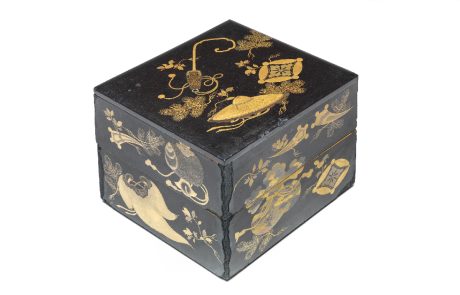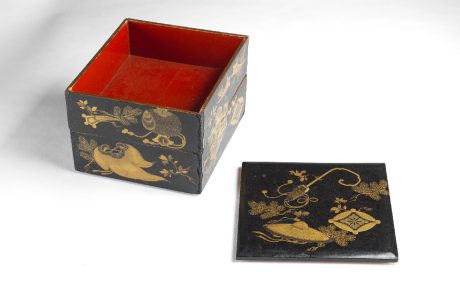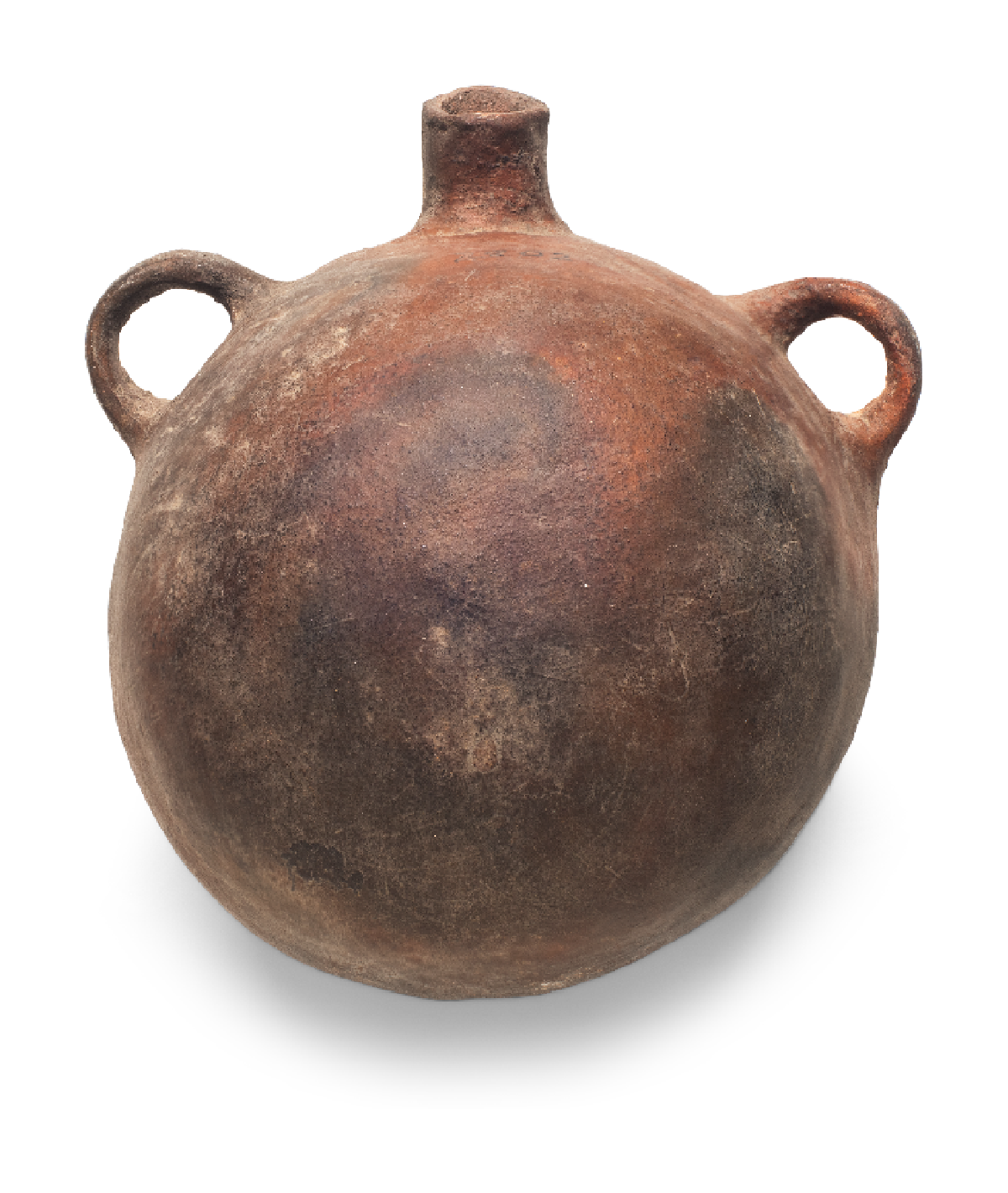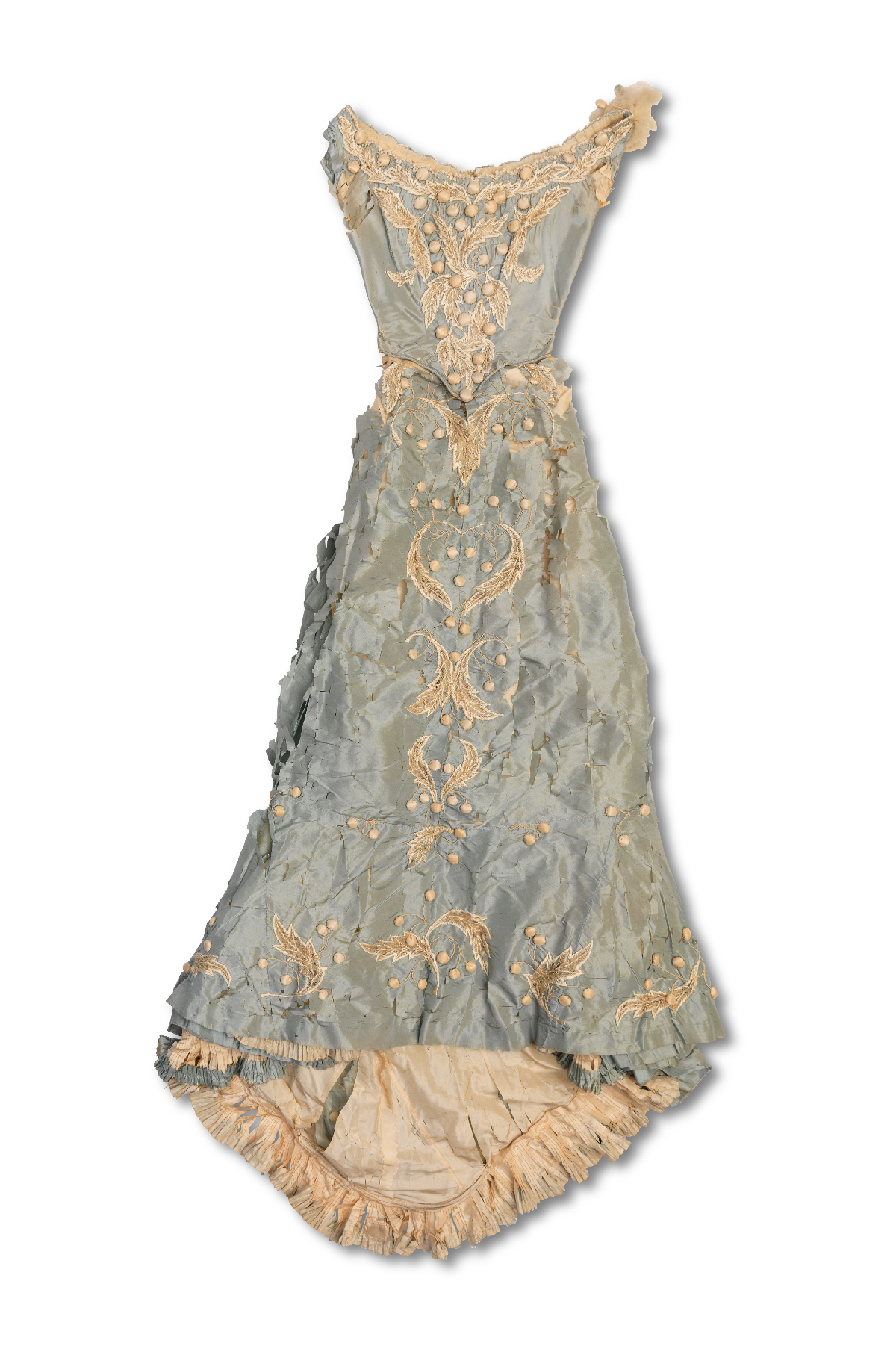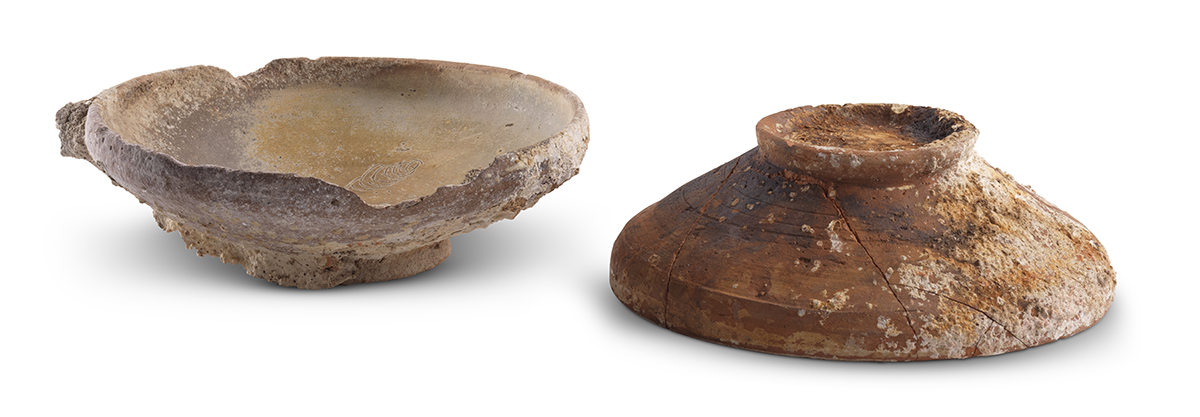Urushi Lacquer Jūbako
Jūbako, 19th–20th century
Unknown maker, Japan
Wood with lacquer, with lid: 4 × 9 5/8 × 9 in. (10.2 × 24.5 × 22.9 cm); without lid: 3 7/8 × 9 1/2 × 9 in. (9.8 × 24.1 × 22.9 cm)
Restored, date(s) unknown
Private collection
Japanese urushi-lacquer jūbako (tiered boxes) are made from a complex combination of materials. These boxes are constructed from wooden panels that are typically prepared with an underlying layer of animal glue and fabric to limit warping under changing conditions of temperature and humidity, not unlike paintings on panel. Urushi lacquer is then applied in numerous thin layers, left to cure in a humid environment, and polished to produce a lustrous surface. Metal inlays and powders are sometimes added to create intricate designs. When properly applied, lacquer is a remarkably durable coating with the exception of its sensitivity to light; over time, ultraviolet components of sunlight in particular cause the breakdown of the polymerized lacquer, resulting in the formation of craquelure and a hazy appearance.

Click thumbnail images to view slideshow
See other items in How is Matter Active?


